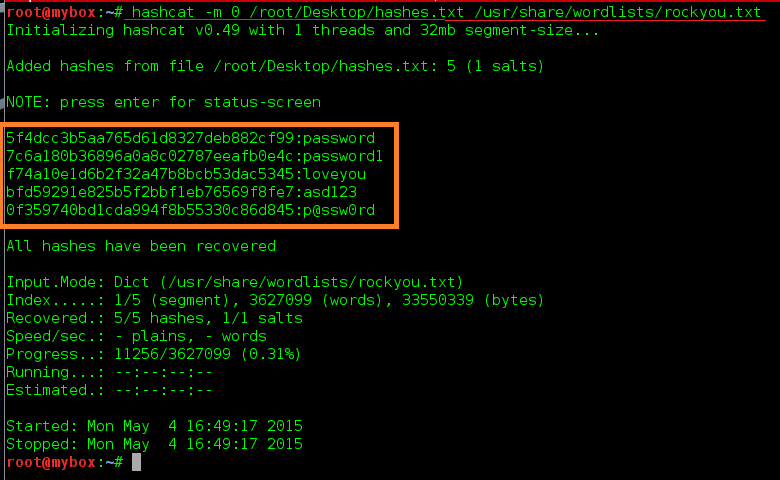
- #GMAIL HACK HASHCAT HOW TO#
- #GMAIL HACK HASHCAT CRACKED#
- #GMAIL HACK HASHCAT PASSWORD#
- #GMAIL HACK HASHCAT WINDOWS#
#GMAIL HACK HASHCAT CRACKED#
#GMAIL HACK HASHCAT PASSWORD#
The character list can be customized to crack the password(s).įinally, Hashcat provides numerous options for password hashes that can be cracked. Hashcat also has specifically designed rules to use on a wordlist file. In general, we need to use both options in most password-cracking attempts when using Hashcat. Some of the most important hashcat options are -m (the hashtype) and -a (attack mode). This is illustrated in the screenshot below: Hashcat can be started on the Kali console with the following command line: hashcat -h. This is also illustrated in the table below: cat target_hashes.txt To do this, we need to type the following command line in the terminal: cat target_hashes.txt The part “tr –d ‘ -‘ “ removes any characters that are a space or hyphen from the output.

The -n option removes the new line added to the end of “Password.” This is important as we don’t want the new line characters to be hashed with our password. In detail, they will then be outputted to a file called “target_hashes.” Each command should be executed in the terminal, as demonstrated below: echo -n “Password” | md5sum | tr -d ” -” > target_hashes.txtĮcho -n “HELLO” | md5sum | tr -d ” -” > target_hashes.txtĮcho -n “MYSECRET” | md5sum | tr -d ” -” > target_hashes.txtĮcho -n “Test1234″ | md5sum | tr -d ” -” > target_hashes.txtĮcho -n “P455w0rd” | md5sum | tr -d ” -” > target_hashes.txtĮcho -n “GuessMe” | md5sum | tr -d ” -” > target_hashes.txtĮcho -n “S3CuReP455Word” | md5sum | tr -d ” -” > target_hashes.txt To start this demonstration, we will create multiple hash entries containing several passwords.
#GMAIL HACK HASHCAT HOW TO#
How to crack a password via a dictionary attack 1. The “rockyou” wordlist found in Kali Linux was used. A dictionary attack will be simulated for a set of MD5 hashes initially created and stored in a target file. The 90+ algorithms can be implemented with performance and optimization in mindĪ small laboratory setup of how to crack a password is presented in the next section.It supports both hex-charset and hex-salt files.The number of threads can be configured and executed based on the lowest priority.This can be used as a brute-force attack variant It can load the salt list from the external file.They recognize recovered hashes from the outfile at startup It is possible to resume or limit sessions automatically.All attack modes can be extended by specialized rules.

#GMAIL HACK HASHCAT WINDOWS#

The simplest way to crack a hash is to try first to guess the password.


 0 kommentar(er)
0 kommentar(er)
